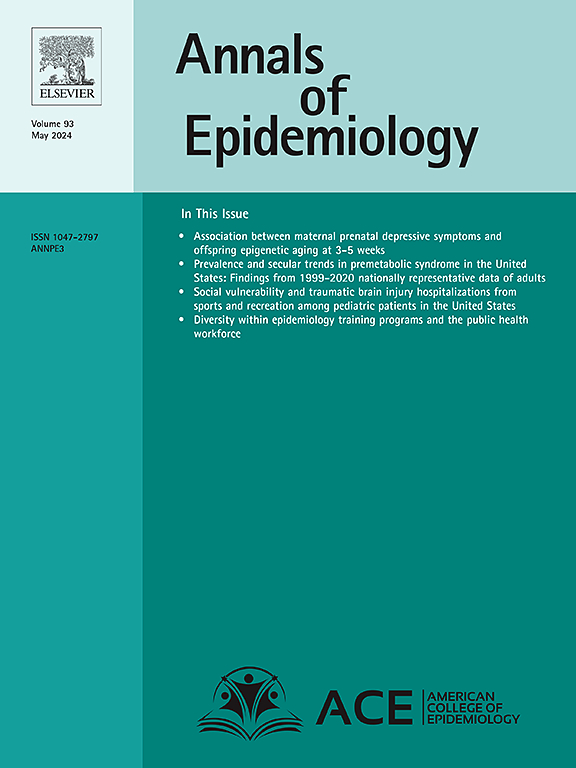不良的童年经历和枪支储存模式
IF 3.3
3区 医学
Q1 PUBLIC, ENVIRONMENTAL & OCCUPATIONAL HEALTH
引用次数: 0
摘要
本研究使用来自内华达州、新泽西州、俄勒冈州和弗吉尼亚州的2023年行为风险因素监测系统(BRFSS)的数据,调查了拥有枪支的家庭中成年人的不良童年经历(ace)与枪支储存习惯之间的关系。多元逻辑回归分析的结果显示,相对于0个ace的受访者,2-3个ace(调整优势比[aOR] = 1.48, 95 %置信区间[CI] = 1.12-1.97, p = .007)和4个 + (aOR = 1.60, 95 % CI = 1.19-2.16, p = .002)与储存枪支的可能性更高相关。在个人王牌项目,家庭酗酒(aOR = 1.36, 95 % CI = 1.08 - -1.71, p = .008),家庭监禁(aOR = 1.67, 95 % CI = 1.18 - -2.36, p = 04),父母离婚/分居(aOR = 1.37, 95 % CI = 1.09 - -1.72, p = .007)的几率就越储存武器装载。这些研究结果强调,需要采取有针对性的公共卫生干预措施,解决童年逆境对成年后健康和安全做法的持久影响。本文章由计算机程序翻译,如有差异,请以英文原文为准。
Adverse childhood experiences and firearm storage patterns
This study investigates the relationship between adverse childhood experiences (ACEs) and firearm storage practices among adults in firearm-owning households using data from the 2023 Behavioral Risk Factor Surveillance System (BRFSS) across Nevada, New Jersey, Oregon, and Virginia. Findings from multiple logistic regression analyses reveal that relative to respondents with 0 ACEs, 2–3 ACEs (Adjusted Odds Ratio [aOR] = 1.48, 95 % Confidence Interval [CI] = 1.12–1.97, p = .007) and 4 + ACEs (aOR = 1.60, 95 % CI = 1.19–2.16, p = .002) were associated with a higher likelihood of storing a firearm loaded versus unloaded. Among individual ACE items, household alcoholism (aOR = 1.36, 95 % CI = 1.08–1.71, p = .008), household incarceration (aOR = 1.67, 95 % CI = 1.18–2.36, p = .004), parental divorce/separation (aOR = 1.37, 95 % CI = 1.09–1.72, p = .007) were associated with higher odds of storing a firearm loaded. These findings underscore the need for tailored public health interventions that address the lasting impacts of childhood adversity on health and safety practices in adulthood.
求助全文
通过发布文献求助,成功后即可免费获取论文全文。
去求助
来源期刊

Annals of Epidemiology
医学-公共卫生、环境卫生与职业卫生
CiteScore
7.40
自引率
1.80%
发文量
207
审稿时长
59 days
期刊介绍:
The journal emphasizes the application of epidemiologic methods to issues that affect the distribution and determinants of human illness in diverse contexts. Its primary focus is on chronic and acute conditions of diverse etiologies and of major importance to clinical medicine, public health, and health care delivery.
 求助内容:
求助内容: 应助结果提醒方式:
应助结果提醒方式:


